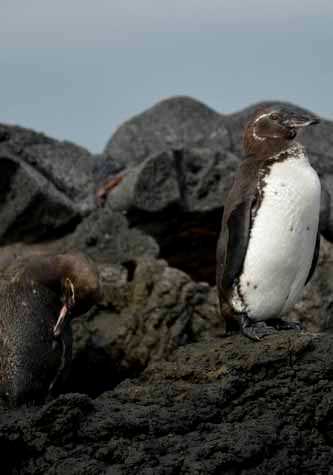Today we started our day anchored next to 7 small islets known as Bain Bridges. Shortly after breakfast we lowered our zodiacs and got ready to explore the surroundings of the area. Our main attraction was a cinder cone with an interesting shape that gave this location its name, Sombrero Chino. As we arrived to the lava rocks shore birds, such as striated herons and a Galapagos hawk, focused on the rocks as they hunted their prey in the crevices. On our ride we spotted Galapagos penguins in the water and to our surprise they came out right in front of us and hopped on the rocks to pose for us.
Once back onboard the National Geographic Islander, we got everything in order to see what one of the largest marine reserves in the world was about to show us. The deep water snorkeling was great! We had a perfect combination of clear waters and incredible under water activity. Schools of razor surgeon fish were cruising among parrot fish that were feeding on patches of coral. A few penguins were spotted zooming underwater like small torpedoes. After this enjoyable experience, we got to see one of the Bainbridge islands while circumnavigating it.
Sullivan’s Bay
After lunch we pulled anchor and started navigating to our next destination. In the afternoon we landed on the lava fields of Sullivan bay. This place is the result of the very last volcanic eruption reported on Santiago in 1897. Since the very beginning the rocks and the way lava was found was completely interesting, just like walking through a geology text book. Pahoe-hoe lava, Ah-ah lava, driblets and cinder cones are found on this site, giving us the chance to learn and imagine how this area was formed 118 years ago.
After our hike on our way back to the National Geographic Islander we got the chance to see a great sunset. The painted colors in the sky reminded us of the privilege that we had to spend another day on the Enchanted Islands.







